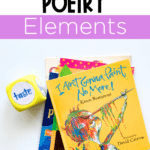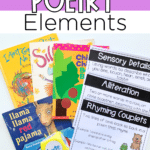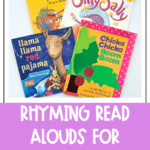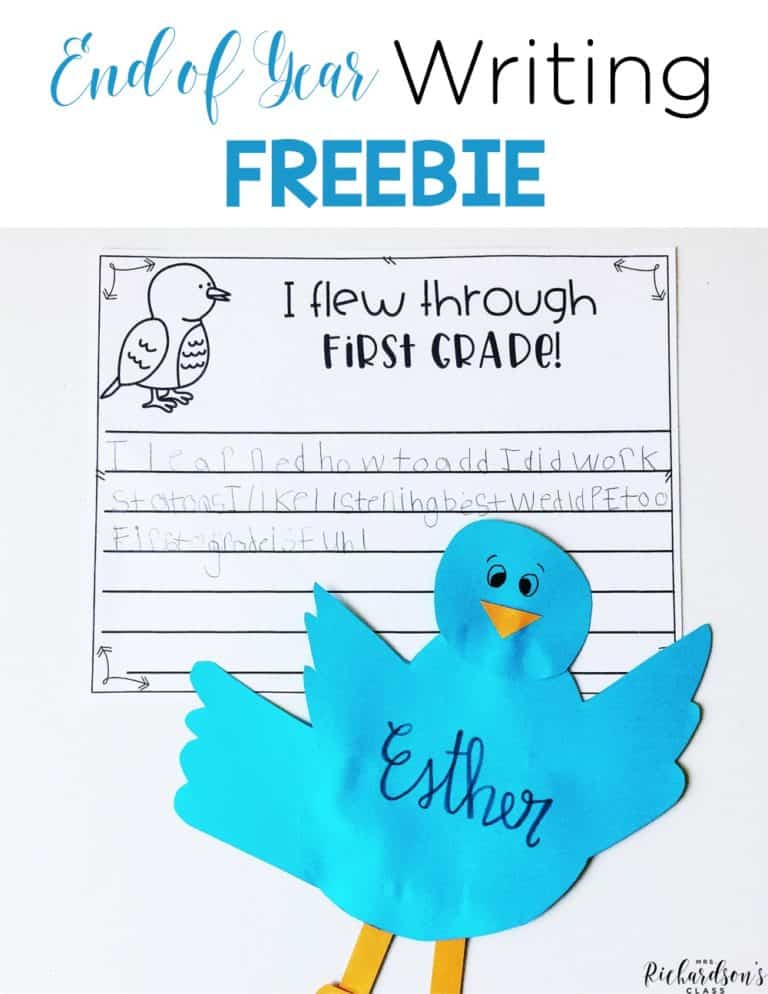

Introducing poetry to young learners can be an enjoyable and enriching experience. It fosters creativity, language development, and a love for writing. Sometimes, it can feel tricky to know where to begin when it comes to teaching poetry. With engaging activities and strategies for teaching poetry elements to our young writers, it doesn’t have to feel overwhelming. From rhyming couplets to sensory poetry, these fun and interactive approaches will inspire young poets and deepen their understanding of poetry elements.
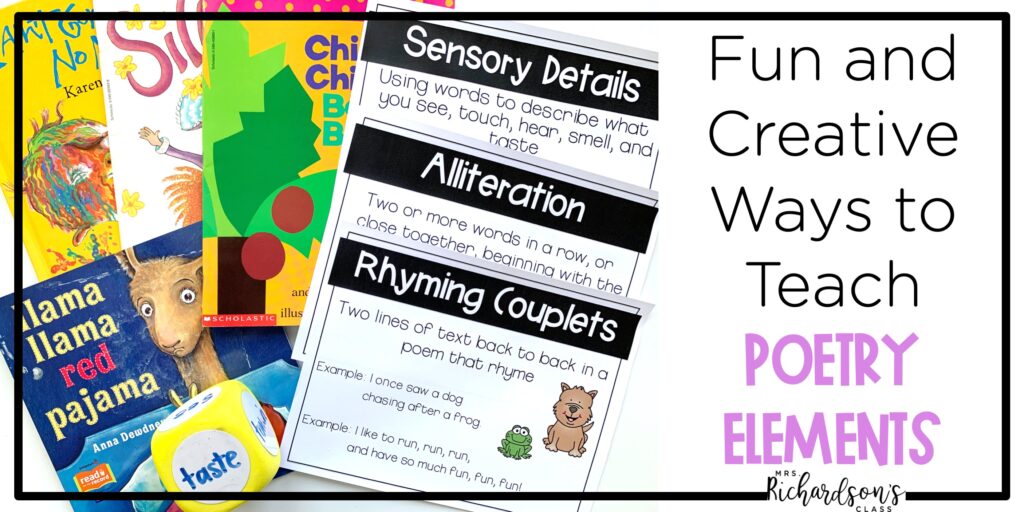
This was my favorite way to begin teaching poetry! Not only was this a familiar concept for my 1st grade writers, but they could do it! They knew how to rhyme!
Rhyming couplets are where two lines of poetry rhyme with each other. Encourage students to identify and create simple rhymes, such as cat and hat or sun and fun.
One way to do this is to play a rhyming game! Have kids sit in a circle and start by giving a word. For example, “car.” Then, the person to your right will rhyme with “car.” They might say, “far.” Continue until either you have run out of rhymes or completed the circle!
Then, get them writing and brainstorming!
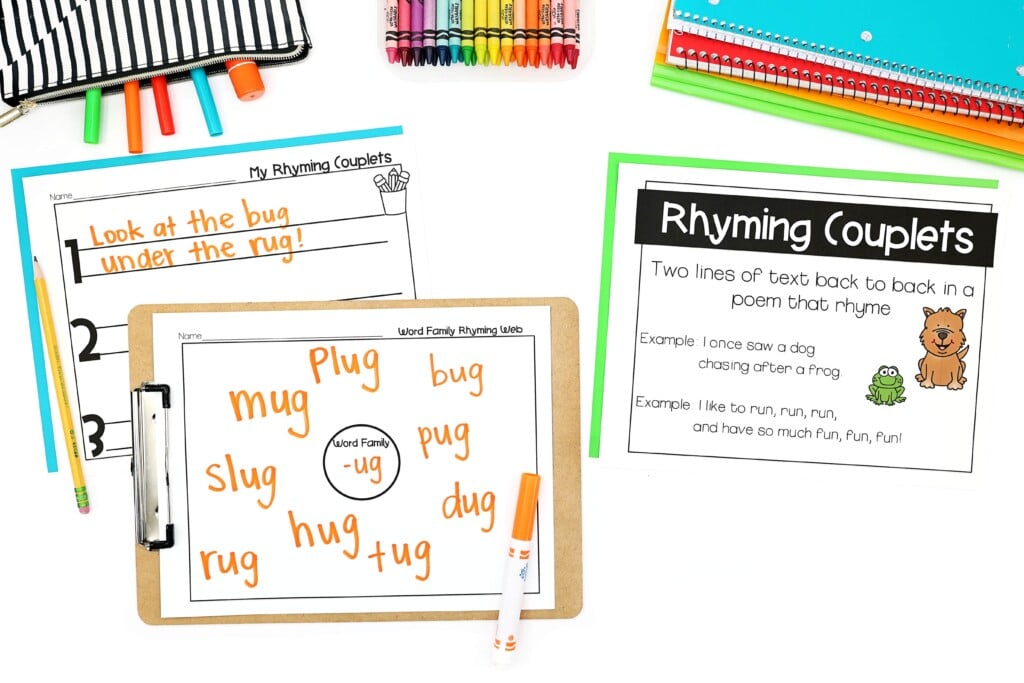
If you haven’t discussed rhyming much, then you can use nursery rhymes and rhyming picture books to introduce the concept of rhyme and rhythm in poetry. Here are some favorite read alouds for rhyming.
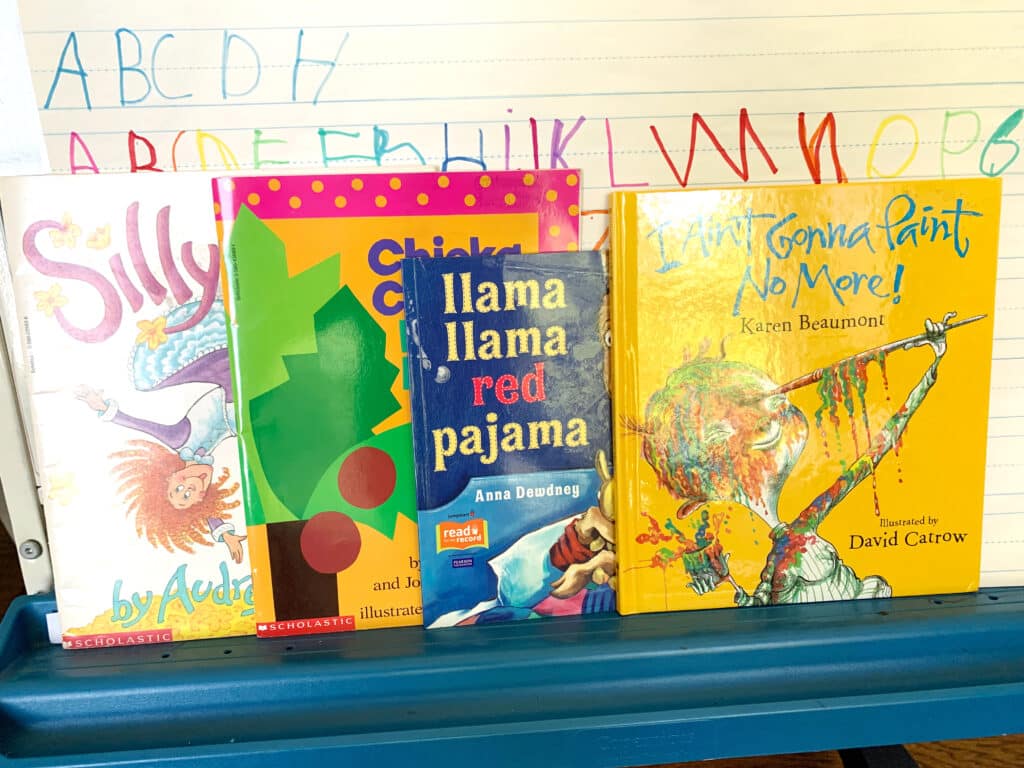
Alliteration is another great place to begin and is FUN for your growing writers! Alliteration is when multiple words begin with the same sound. Have students create silly sentences or tongue twisters using alliteration, such as “Sally sells seashells by the seashore.”
One fun way to practice this orally with students is to have them line up in two lines. Line #1 will be the names, while line #2 be the alliteration machine. Line #1 states their name, for example “Joshua”. The person at the front of line #2 is the alliteration machine and says, “jumps!” After their turn is done, they criss-cross lines so that all students get a turn being the alliteration machine and having their name used!
When your students are ready for writing, you can help them get started by just brainstorming words that begin with the same letter, then moving them to sentences!
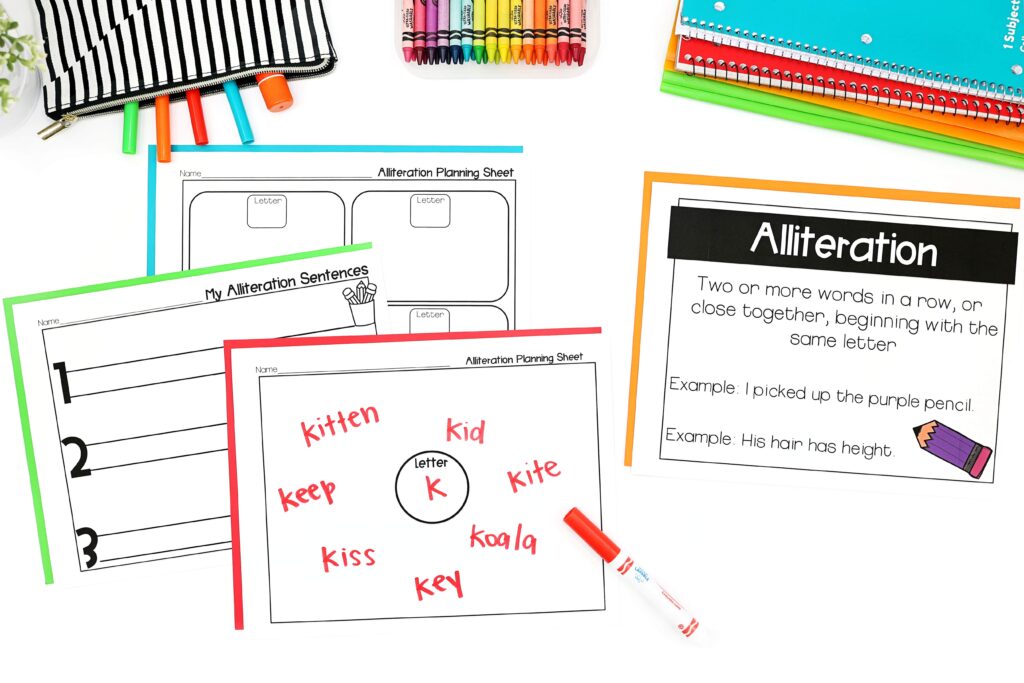
The third poetry element that I focus on is sensory details. This is where students use descriptive language to evoke the five senses. Since students are familiar with their five senses through our science lessons, this is another simple connection for them to make to poetry writing.
An interactive way to help kids get their creative wheels spinning when it comes to sensory details is to play Sensory Detail Roll! Grab a blank dice and on each side write one of the senses. Side 6 can be “you pick!” Give the students a topic, such as school! Then, allow students to take turns rolling the die. Whatever it lands on, they have to come up with that sensory detail for the topic.
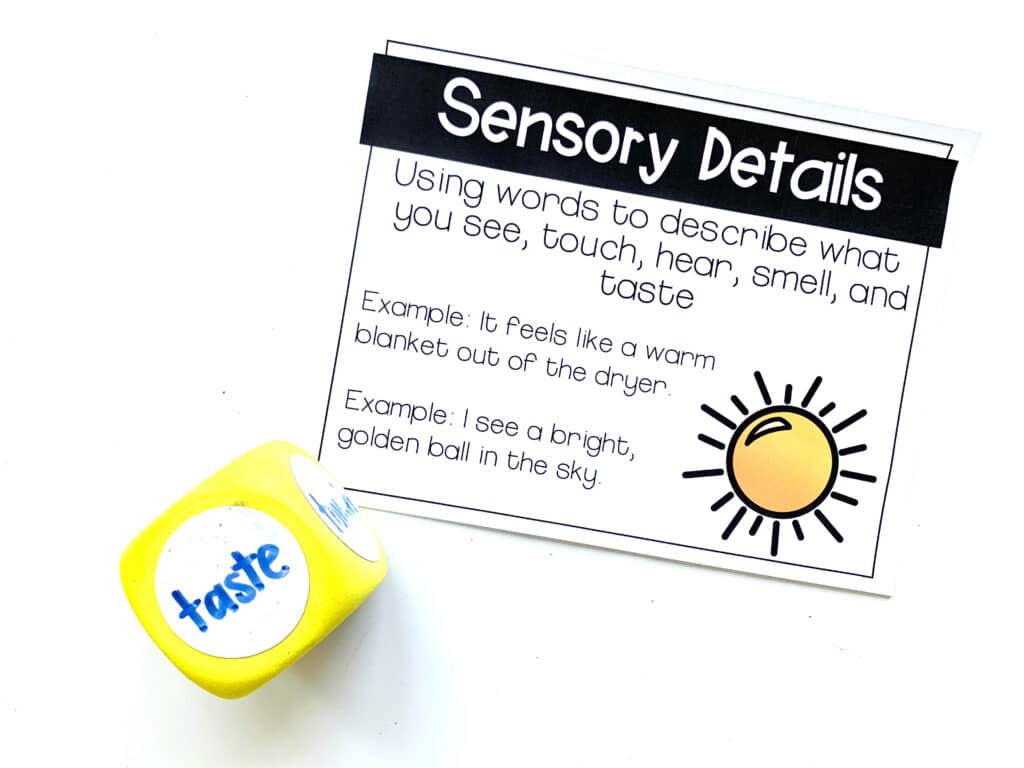
For example, if it lands on “smell”, they may say, “School smells like fresh baked spaghetti.” This game is great for a whole group setting or for students to do in small groups!
When your students are ready to write, they can simply transfer the practice of brainstorming to paper.
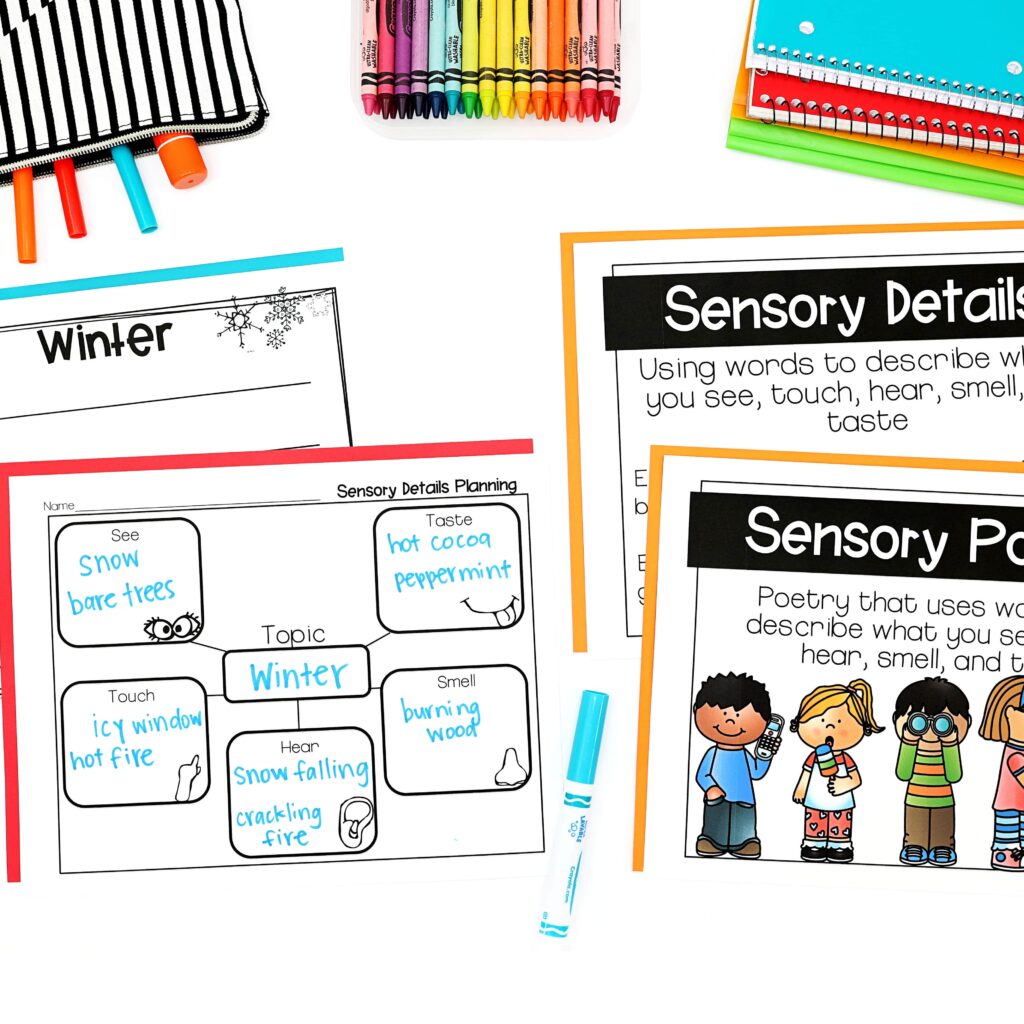
Provide sensory prompts like “I see…”, “I smell,” or “I hear…” for students to begin writing.
Grab a FREEBIE to get started here!
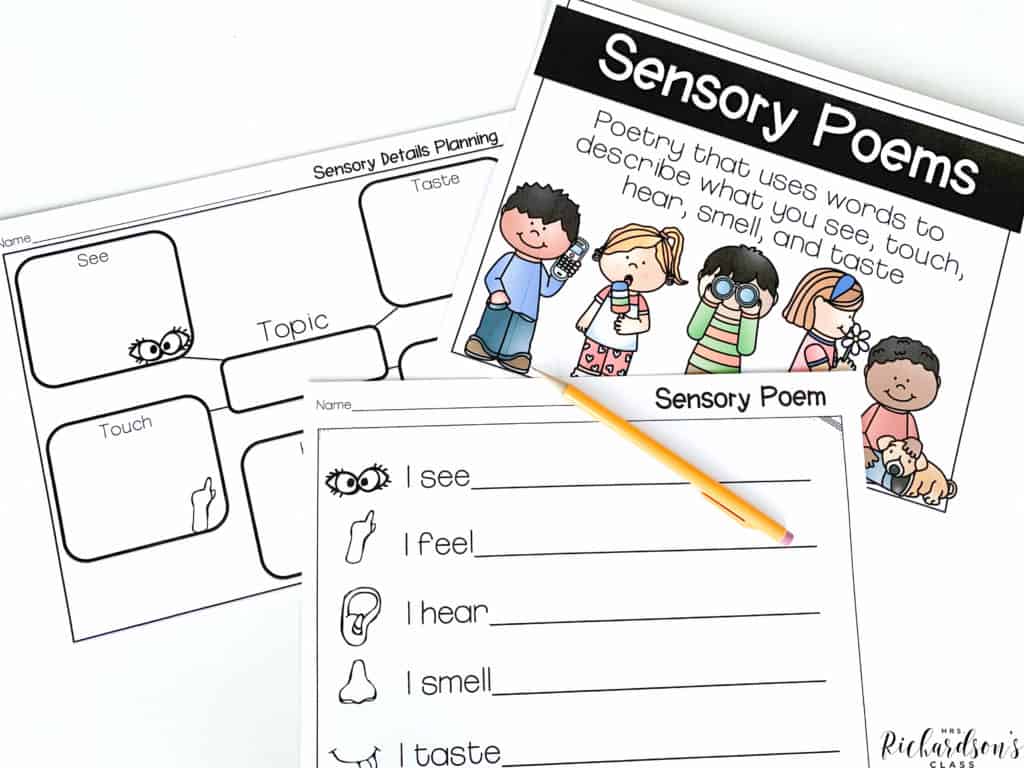
Teaching poetry elements to Kindergarten, 1st grade, and 2nd-grade students can be a rewarding experience filled with creativity and imagination. By incorporating rhyming couplets, alliteration, and sensory details into lessons, you can nurture young poets.
If you are looking for an all inclusive unit to help get started, you will love Poetry for Little Learners!
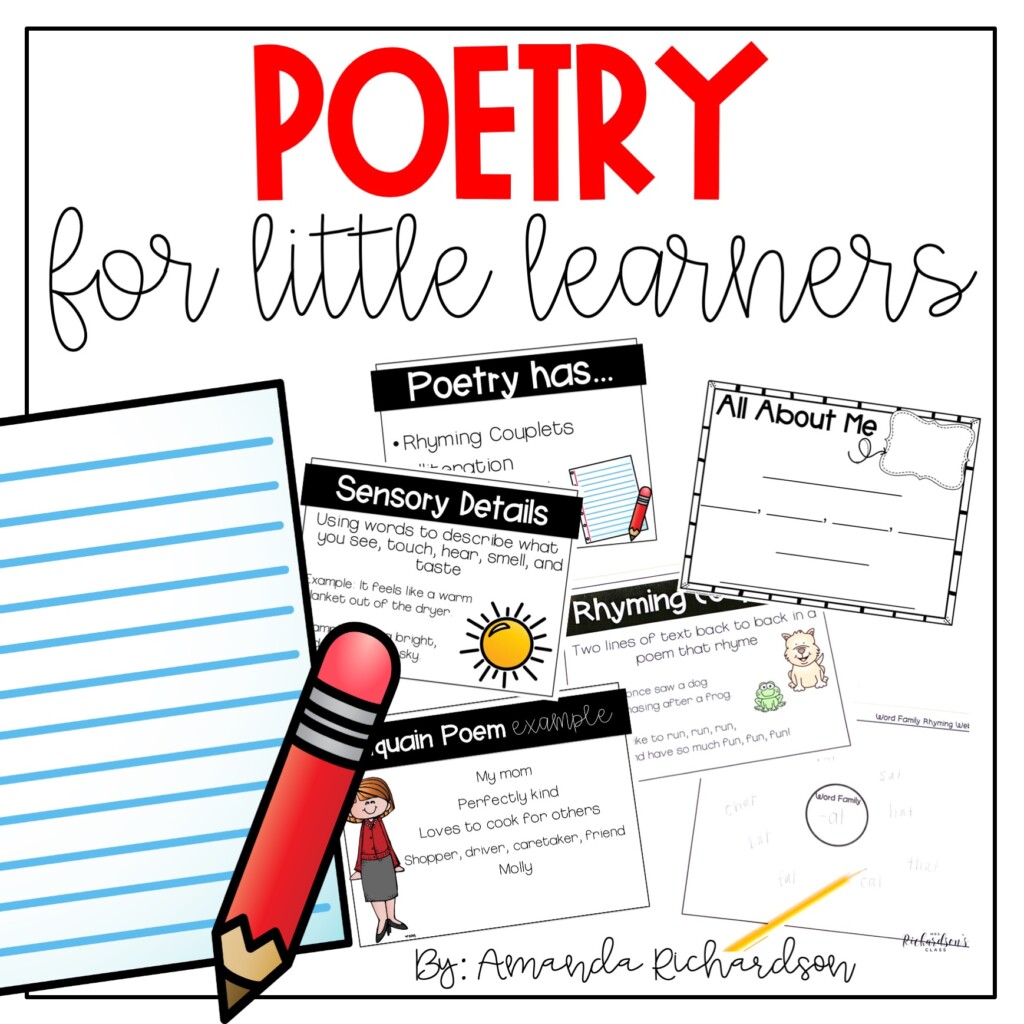
Shop Mrs. Richardson’s Class Shop HERE
These engaging activities for teaching poetry elements are sure to enhance literacy skills!
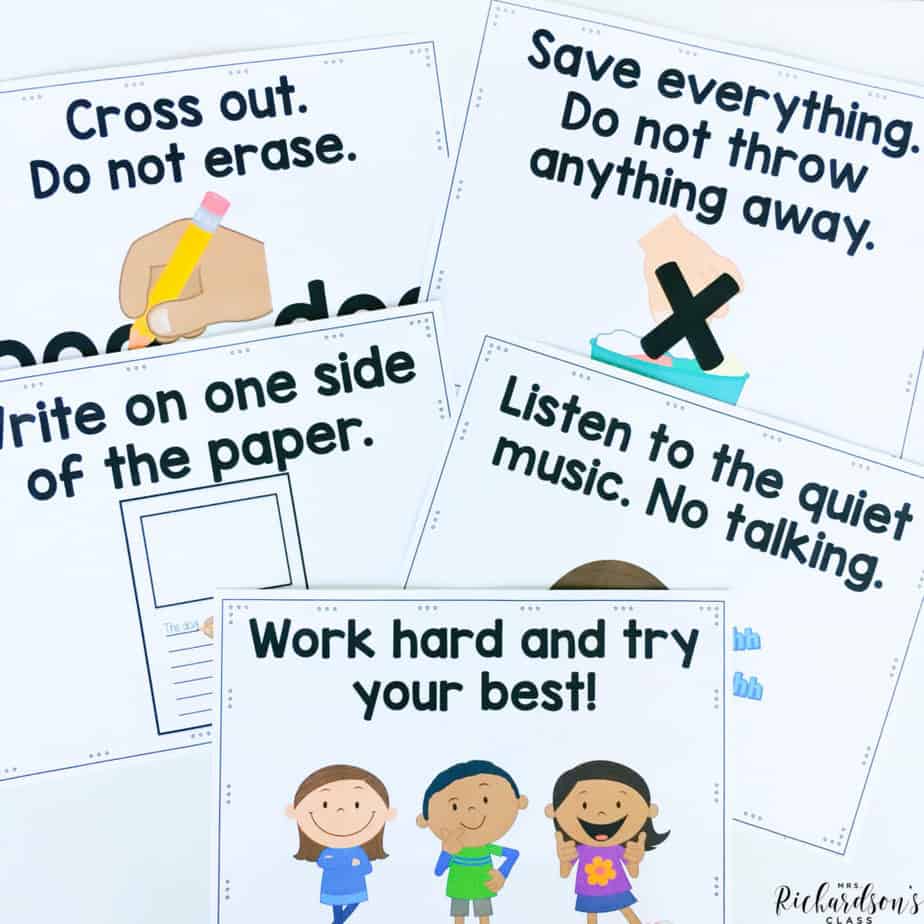

I’m a K-1 teacher who is passionate about making lessons your students love and that are easy to implement for teachers. Helping teachers like you navigate their way through their literacy block brings me great joy. I am a lifelong learner who loves staying on top of current literacy learning and practices. Here, you’ll find the tools you need to move your K-2 students forward!


| Cookie | Duration | Description |
|---|---|---|
| cookielawinfo-checkbox-analytics | 11 months | This cookie is set by GDPR Cookie Consent plugin. The cookie is used to store the user consent for the cookies in the category "Analytics". |
| cookielawinfo-checkbox-functional | 11 months | The cookie is set by GDPR cookie consent to record the user consent for the cookies in the category "Functional". |
| cookielawinfo-checkbox-necessary | 11 months | This cookie is set by GDPR Cookie Consent plugin. The cookies is used to store the user consent for the cookies in the category "Necessary". |
| cookielawinfo-checkbox-others | 11 months | This cookie is set by GDPR Cookie Consent plugin. The cookie is used to store the user consent for the cookies in the category "Other. |
| cookielawinfo-checkbox-performance | 11 months | This cookie is set by GDPR Cookie Consent plugin. The cookie is used to store the user consent for the cookies in the category "Performance". |
| viewed_cookie_policy | 11 months | The cookie is set by the GDPR Cookie Consent plugin and is used to store whether or not user has consented to the use of cookies. It does not store any personal data. |
